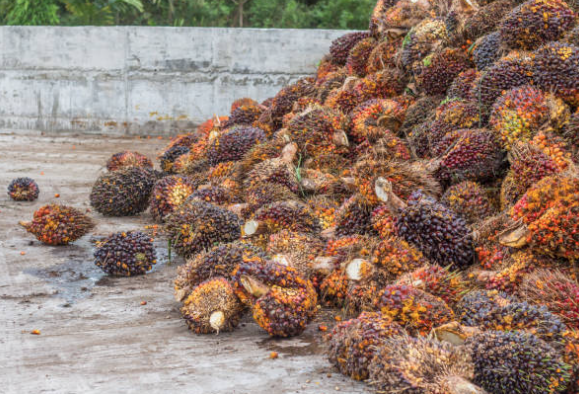Object detection for Asian agribusiness conglomerate
Palm Oil Plantation Fruit Inventory Counting
Introduction
Our client, a leading agribusiness company in Asia, including extensive oil palm plantations, faced operational inefficiencies tied to inventory management. With a broad presence across the region, maintaining accurate inventory was highly important for operational efficiency.
Situation/Problem
Our client had observed significant inventory discrepancies, particularly in tracking the oil palm fresh fruit bunches known in the industry as FFB) harvested from each plantation. The primary challenge stemmed from the fact that individual oil palm fruit bunches are difficult to distinguish when grouped together due to their hairy texture and clustered appearance. Human counters, responsible for tracking the harvested fruit, faced issues such as eye fatigue, which increased counting errors.

These inventory discrepancies not only hindered the company’s operational productivity but also jeopardized its compliance with auditors, threatening potential fines and revenue losses. The inability to track oil palm inventory accurately also left the company vulnerable to unaccounted losses, including the possibility of fruit theft.
To address these challenges, the client sought a more reliable and scalable solution that would improve counting accuracy and streamline inventory management. Tictag was engaged to develop an AI-driven solution tailored to the client's unique environment, which was complicated by dense foliage that prevented the use of traditional surveillance methods like high-mounted CCTVs.
Proposed Solution
Tictag proposed an innovative augmented AI solution that combined crowdsourced human intelligence with AI-based automation. The goal was to create an AI model capable of accurately distinguishing individual fruit bunches within a harvest even in visually complex environments, with an accuracy rate of over 85%.
Tictag's approach involved using human intelligence to manually annotate images of palm oil fruit bunches, ensuring that the AI would have access to a high-quality dataset for training. This method also respected the client's constraints, such as not being able to use certain hardware solutions like CCTV cameras due to environmental factors.
What Was Done
To execute the project, Tictag took the following steps:
- Data Collection: Tictag gathered images of oil palm fruit bunches from the client, transferred through a password-protected SFTP link to ensure compliance with cross-border privacy regulations.
- Data Preparation: From the collected images, 100 of the most unique images were selected for training the AI model. These images were manually tagged by human annotators using polygonal annotations to ensure pinpoint accuracy.
- Quality Control: Each tagged image was meticulously reviewed for quality by experienced team members. This process achieved the client’s approval, with 100% data tagging accuracy.
- Model Training: Tictag used the approved dataset to train the AI model, with the initial goal of achieving an 85% accuracy rate in distinguishing individual fruit bunches
- Client Testing Interface: Tictag developed a user interface (UI) that allowed the client to test the AI model and fine-tune its performance. The client could upload additional images to the model’s UI, enabling further optimization and accuracy improvements.
What Was Achieved
Tictag successfully delivered an AI solution with 85% accuracy, meeting both the client's technical and timeline requirements. The implementation of such a system reduces repetitive, eye-straining effort of identifying individual palm oil fruit bunches, and in turn enables the operational staff to engage in the less repetitive and more cognitive of checking random image samples to validate accuracy.
Taking an average of 5,000 images of 50 fruit bunches per image, per plantation per day, the time savings of such a solution amounts to approximately 500 manhours for one plantation, allowing the client to improve its manpower efficiency by around 75%.
The above description of Tictag’s solution serves as the foundation for a second, larger scale implementation of the solution to achieve a further AI accuracy of 95%. This iteration of the solution, which is in progress at the point of writing, will be integrated into the client’s operational ecosystem and extended to other products in the client’s portfolio.